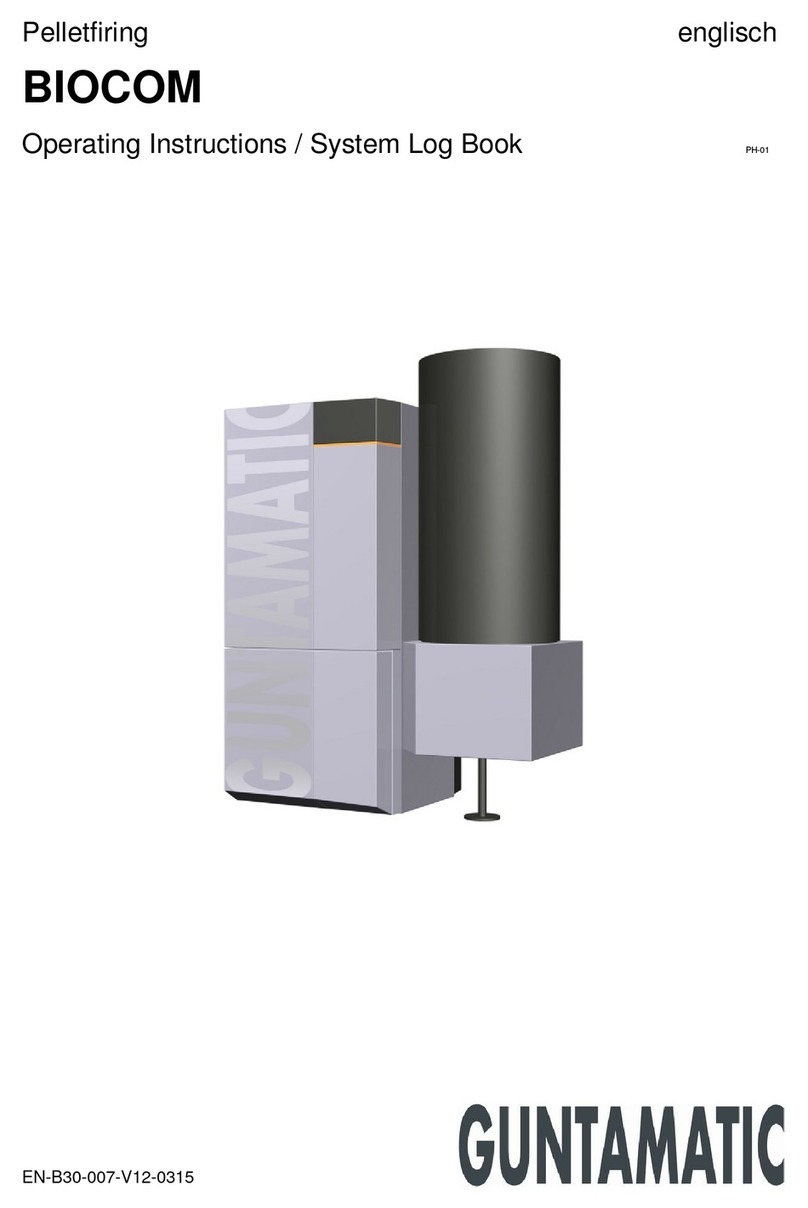
9
2.4 FLUE REQUIREMENTS
BS-01
Use heat-insulated fireclay flues that are
insensitive to damp.
The flue gas temperature can be less than
100°C.
The system must only be connected to the flue if the flue
meets the legal requirements and the technical specifications.
The flue must be matched to the boiler output and
dimensioned in accordance with DIN 4705. In order to be able
to accurately dimension the flue, the calculations must be
based on the flue gas figures. When designing new flues, high
thermal insulation chimneys (DIN 18160 T1 heat transmission
resistance group I) or suitable fireclay flues that are
insusceptible to damp and have general building regulation
approval should be used. It is advisable to involve those
responsible for approving the flue system early on in the
planning phase.
Flue height The minimum flue height is 5 - 10
m depending on boiler
output. The flue must terminate at least 0.5
m above the
highest part of the building. In the case of flat rooves, the flue
must terminate at least 1.5
m above the surface of the roof.
Flue diameter The flue hast to adjust on the fire power. The following dates
are approximate values and could be used for planning. We
recommend calculating the flue by a professional.
BIOSTAR 12 / 15
BIOSTAR 23
eff. High above 6 m D = 140 mm
eff. High below 6 m D = 160 mm
eff. High above 6 m D = 160 mm
eff. High below 6 m D = 180 mm
Flue dimensioning data Dimension the flue for rated output!
(Averaged figures with used heat exchanger)
Rated output:
Type Exhaust
gas CO
2
massflow Flue
draught
BS 12 160°C 13,6% 0,010 kg/s 10 Pascal
BS 15 175°C 14,3% 0,012 kg/s 10 Pascal
BS 23 180°C 13,1% 0,016 kg/s 15 Pascal
Teillast:
Type Exhaust
gas CO
2
Massenstrom Flue
draught
BS 12 105°C 9,9% 0,003 kg/s 2 Pascal
BS 15 105°C 9,9% 0,003 kg/s 2 Pascal
BS 23 101°C 10,0% 0,006 kg/s 2 Pascal



























